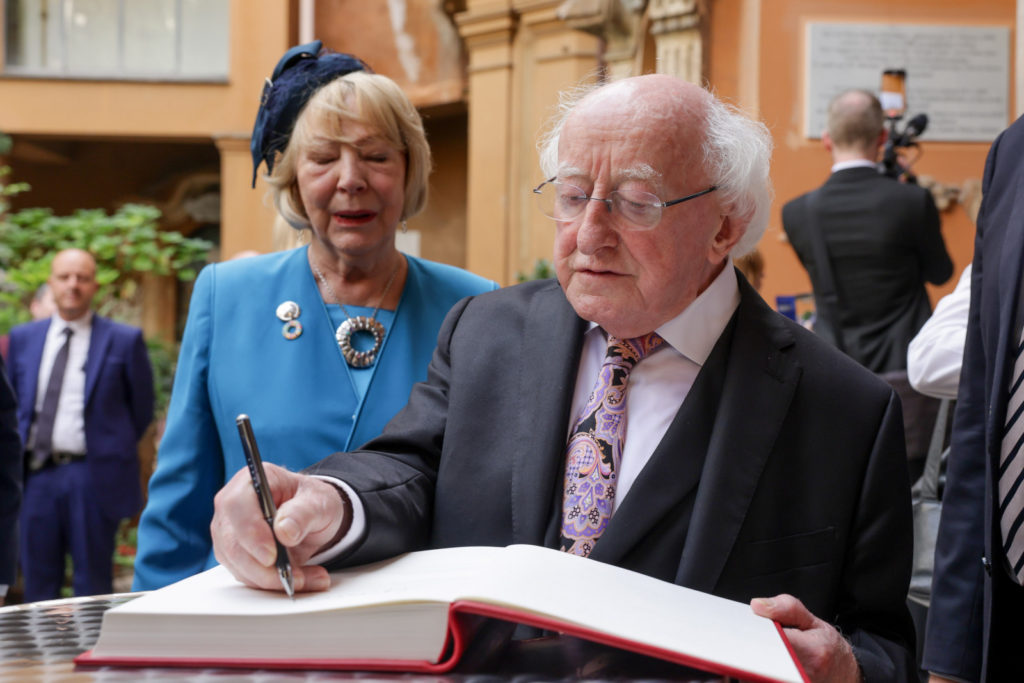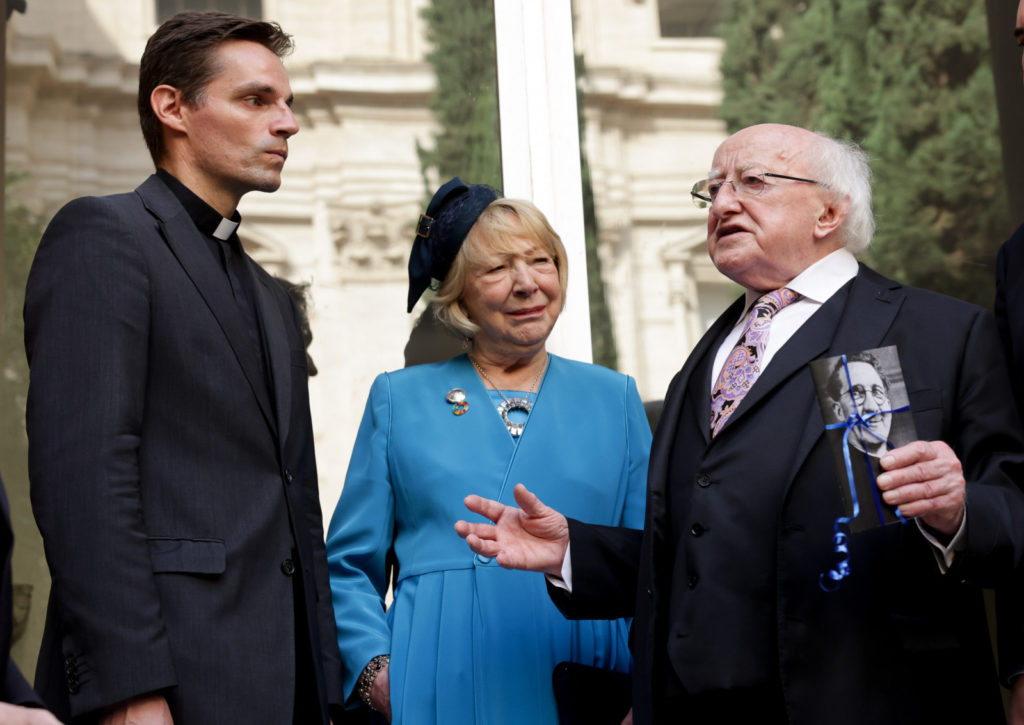A WREATH-LAYING ceremony has taken place in Rome marking the 60th anniversary of the death of Monsignor Hugh O’Flaherty.
President Michael D Higgins paid tribute to the Cork-born priest while in Italy this week for the five-day World Food Forum.
 President Michael D Higgins was accompanied by wife Sabina for the occasion
President Michael D Higgins was accompanied by wife Sabina for the occasionO’Flaherty was born in 1898 and brought up in Killarney, Co. Kerry. He later became a Catholic priest and went to live and study in Rome.
He was living in Italy in the late 1930s when the Nazis invasion of Europe began.
When Hitler’s army eventually captured Rome, they did not overtake the Vatican City, which was a neutral, independent state.
O’Flaherty and a team of activists started to conceal those fleeing from the Nazis, mostly Allied soldiers and Jewish refugees, in flats, farms and convents inside the Vatican and across the city of Rome.
It is thought his actions contributed to saving over 6,500 people.
 The statue of Mgr O’Flaherty in his hometown of Killarney
The statue of Mgr O’Flaherty in his hometown of KillarneyThe Germans, although aware of his activities, were unable to arrest O’Flaherty inside the Vatican.
He became known for his ability to evade Nazi capture, and whenever leaving the safety of the Vatican he used a series of disguises and fake identification papers to avoid detection.
In 2016 a plaque honouring the moral courage of Monsignor Hugh O’Flaherty was unveiled at the Teutonic College in the Vatican.
 President Higgins travelled to the Campo Santo in the Teutonic Pontifical College, where he laid the wreath in honour of the late Monsignor Hugh O’Flaherty
President Higgins travelled to the Campo Santo in the Teutonic Pontifical College, where he laid the wreath in honour of the late Monsignor Hugh O’FlahertyYesterday President Higgins laid a wreath at the plaque, marking the 60th anniversary of Monsignor O’Flaherty’s death on October 30, 1963.
Following that he viewed the exhibition Ireland and the Birth of Europe at the Irish Pontifical College.
The exhibition tells the story of the role played by Irish scholars and missionaries, including Saint Columbanus and his followers, in the shaping of a shared European identity.

